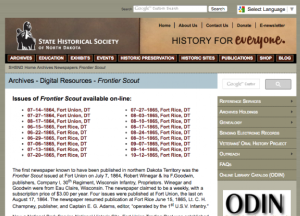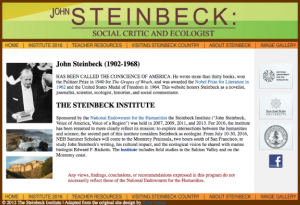General Interest
Back to Top
|
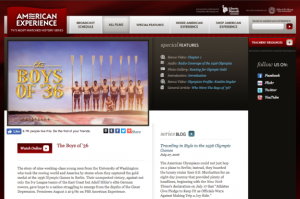 |
|
American Experience: The Boys of '36
|
Physical Education |
|
In 1936, a team of young rowers from the University of Washington surprised the nation when they beat out Ivy League competition to represent the United States in the Olympics, held that year in Nazi Germany. Once in Berlin, the team beat significant odds to win the gold medal. The most recent episode of PBS's American Experience commemorates the 80th anniversary of the so-called "Boys of '36" with this moving documentary about the experiences of these rowers and the significance of their feat. Unlike many of their Ivy League counterparts, the University of Washington rowing crew hailed from families hit hard by the Great Depression. The team's buffer, Joe Rantz, was abandoned by his family while still a boy. Timothy Egan, who authored a book on the Great Depression, notes that many young men joined the University of Washington team as a way to secure a meals at the university. On this website, visitors can watch this documentary in full and view accompanying resources, including a remarkable photo gallery and interviews with contemporary rowers. [MMB] |
|





|
|
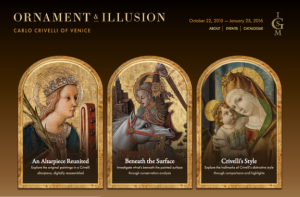 |
|
Ornament and Illusion: Carlo Crivelli of Venice
|
Arts |
|
As noted by the authors of this website, Renaissance artist Carlo Crivelli, "is one of the most important, but historically neglected painters of the 15th century." Last winter, the Isabella Stuart Gardner museum in Boston hosted a special exhibit of works by Crivelli, who painted religious portraits and scenes from his home in northeast Italy. On this website, visitors can view a number of Crivelli's fascinating paintings in great detail; the site includes a magnification tool that allows visitors to examine the fine features of each painting from their computer screen. In the Beneath the Surface section, visitors can learn how Crivelli's iconic piece, Saint George Slaying the Dragon, was analyzed and restored using infrared reflectography and Reflective Transformation Imaging (RTI). Readers may also view Crivelli's original "underdrawing" of this work, as revealed by this technology. In addition, this site includes video and audio clips of curator insights into Crivelli's work. [MMB] |
|





|
|
 |
|
 |
|
#FolkloreThursday
|
Social studies |
|
The #FolkloreThursday movement began on Twitter in June of 2015, encouraging folklore enthusiasts to contribute their own knowledge of fairy tales, fables, crafts, folk music, folk art, children's rhymes, and more. Since then, the #FolkloreThursday website has become "a place to post folklore related blog posts, quotes, and other oddments." Contributions are fact-checked by hosts Willow Winsham (a historian who recently published the book Accused: British Witches Throughout History) and DeeDee Chainey (educator and writer) and cover a variety of topics. For instance, children's book writer H.J. Blenkinsop explores "the curious origins of nursery rhyme cats," while historian Catherine Curzon examines the propensity across cultures to link birds with death. As Chainey recently told The Independent, "Folklore, traditionally is an oral thing. It's only in recent years that people have started studying and documenting it on a wide scale... Reading other people's blog posts is often a great way to get an overview of a subject without having to dig through piles of papers that might be in a different city, or might be unavailable altogether." [MMB] |
|





|
|
 |
|
Art of Science
|
Arts |
|
On Art of Science, visitors can browse through seven online galleries of gorgeous, curious images. These images, as the website explains, "are not art for art's sake. Rather, they are produced during the course of scientific research." Since 2005, Princeton University has hosted seven contests that invite scientists around the world to submit photographs (and, during its most recent 2014 contest, videos) of images created from their work in science - including chemistry, biology, and computer science. These images are then judged "for their aesthetic excellence as well as scientific or technical interest." On this website, visitors can browse galleries of winning photographs, which include a model of earth's geomagnetic reversal, maps of website addresses and traffic, and the spectacular results of chemical reactions. All entries, with the exception of entries from the 2014 contest, are accompanied by a description explaining the image's origin and scientific significance. [MMB] |
|





|
|
 |
|
National Park Service: Pollinators
|
Science |
|
The National Park Service has created an online guide to some of nature's most prominent pollinators, including hummingbirds, monarch butterflies, and bees. As the site notes, "More than 75 percent of the Earth's flowering plants depend on bees, butterflies, birds, bats, and other pollinators. Yet scientists have noted that these hardworking insects and other animals are in trouble." A number of factors threaten pollinators, including climate change, pesticide use, and the introduction of non-native species into their habitats. On this website, visitors can learn more about the important role pollinators play in ecosystems around the world and learn about the traits of specific pollinators. In the Know Your Pollinators section, readers can read short articles about specific species and national parks. This website is a great resource for anyone interested in learning more about different kinds of pollinators or about the widespread impact of global climate change. [MMB] |
|





|
|
 |
|
Now Dig This!: Art and Black Los Angeles at the Hammer Museum
|
Arts |
|
Between 1960 and 1980, black artists and curators created a rich artistic community in Los Angeles. Artists involved in this community include Betye Saar, Melvin Edwards, Fred Eversley, Alonzo Davis, and Samella Lewis, to name just a few. These artists were inspired by the political and cultural changes in Los Angeles and by civil rights activism during this era. In 2011, Columbia University art historian Kellie Jones curated Now Dig This!: Art and Black Los Angeles to commemorate and exhibit this artistic community. In 2016, the Hammer Museum of Los Angeles digitized this remarkable collection. Site visitors can browse through 130 images and videos created by over 30 artists. Each work of art is accompanied by thoughtful commentary that positions the piece in context. Visitors can also explore this collection by artist, or by curated themes, including Frontrunners, Artist/Galleries, and L.A. Snapshot. This collection also includes three critical essays, including one authored by Jones. [MMB] |
|





|
|
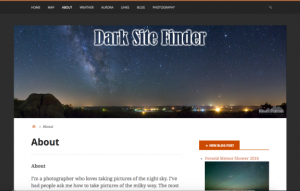 |
|




